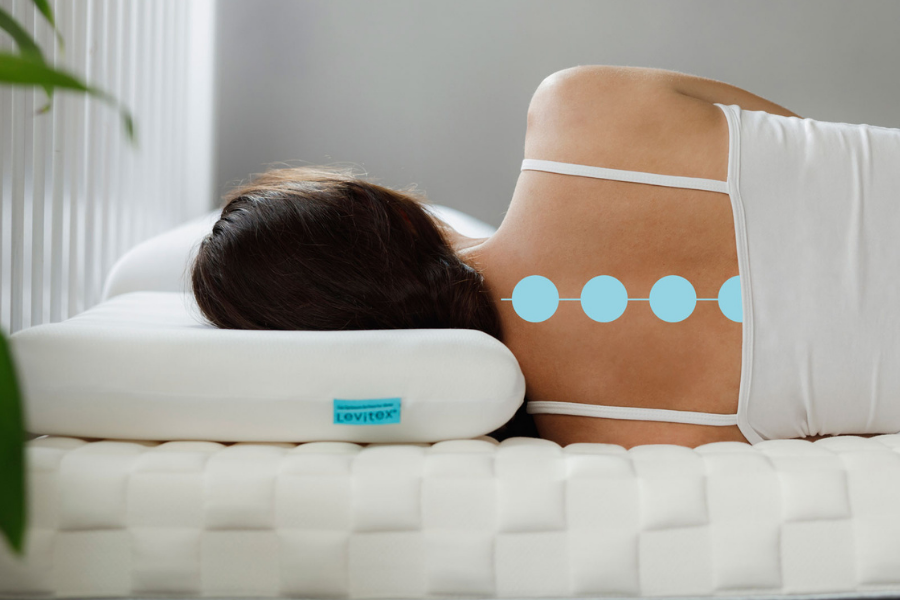Sleep posture – a cheat’s way to a good night’s sleep
If you were to live for 79 years, on average you’d have spent 26 years sleeping and 7 years trying to get to sleep.
Sleep masks, cooling mattresses, melanin pens – you’ve likely seen millions of products promising you ‘the perfect night’s sleep’.
The truth is, there is no such thing.
No pillow is able to impact your mood if something is weighing heavy on your mind, and no mattress is able stop you from watching another episode of Downton Abbey at 11PM.
However, don’t despair!
If you ever wake up feeling achy, stiff or sore, like you’ve been hit in the head with a hammer and could do with being put into hibernation, then keep on reading.
While no one can promise you ‘the perfect night’s sleep’, you can certainly optimise what you lie on and the position you sleep in, to allow your body to rest and recover while you’re in bed.
This is how we address sleep posture aka the position of your body at night. Good sleep posture can help you:
- Wake up free from neck and back pain
- Improve your digestion and circulation
- Reduce snoring
- Lessen tension in your neck and shoulders
- Boost your energy levels and core strength
That’s quite the resume for something you’ve never heard of before. Which is why we are talking to you about sleep posture – quite literally a cheat’s way to a good night sleep.
How do you achieve good sleep posture?
Let’s start from scratch. Do you even know how you sleep? Take a look at the most common sleeping positions below. Which one is you?
 If you are anything but the dreamer (or in some circumstances, the soldier), then you’re not addressing your sleep posture and most likely wake up with neck or back pain. This is because in all of the other positions, you fail to achieve neutral spinal alignment, which is the holy grail of sleep posture.
If you are anything but the dreamer (or in some circumstances, the soldier), then you’re not addressing your sleep posture and most likely wake up with neck or back pain. This is because in all of the other positions, you fail to achieve neutral spinal alignment, which is the holy grail of sleep posture.
Since the late 80s, it’s been well evidenced that semi-foetal side lying (aka the dreamer) is the best position for a neutral resting spine and waking up ache free.
For side lying to help you achieve a good sleep posture, you must ensure that your head is lifted off the bed enough so that your neck is aligned with the rest of your spine your spine.
 This is where the second consideration for good sleep posture comes in: a pillow that perfectly fills the space between your mattress and your head.
This is where the second consideration for good sleep posture comes in: a pillow that perfectly fills the space between your mattress and your head.
The material properties of your pillow should allow enough immersion to relieve pressure, but not too much immersion that it has a negative impact on your sleep posture.
Fortunately, there is a pillow that checks all these boxes.
It does this by being the perfect mix of pressure relief, posture management and proprioceptive feedback.
This innovation in foam technology has been developed with postural expertise, pain medicine consultants and leading engineers. Lots of experts; but the truth is the Levitex Gravity Defying pillow has one unique feature – compressibility.
Soft like traditional memory foam, but firm like a sprung mattress, all in one composition. At 25% compression (light squeeze) the softness takes all the pressure off your body. However, at 65% compression (firm squeeze), the firmness supports your body and maintains your posture.
Now…
You may have figured out that if a pillow is meant to perfectly fill the space between your head and the mattress, then it can’t be a one-size-fits-all situation. The Levitex pillow comes in four sizes.
You won’t have to throw your old pillow away, either – stick it between your knees and ankles to help your hips remain neutral for the ultimate sleep posture.
If you want to address sleep posture for the very first time, check out our exclusive Silversurfers Discounts+ offer.
ADVERTORIAL





















